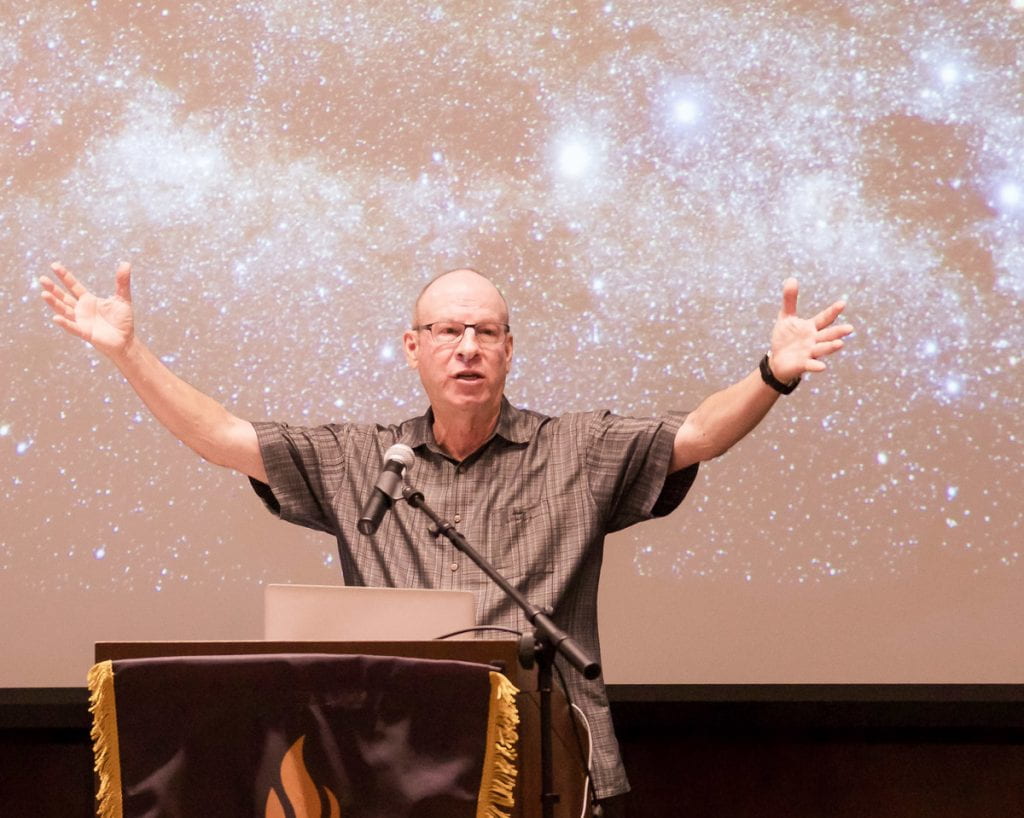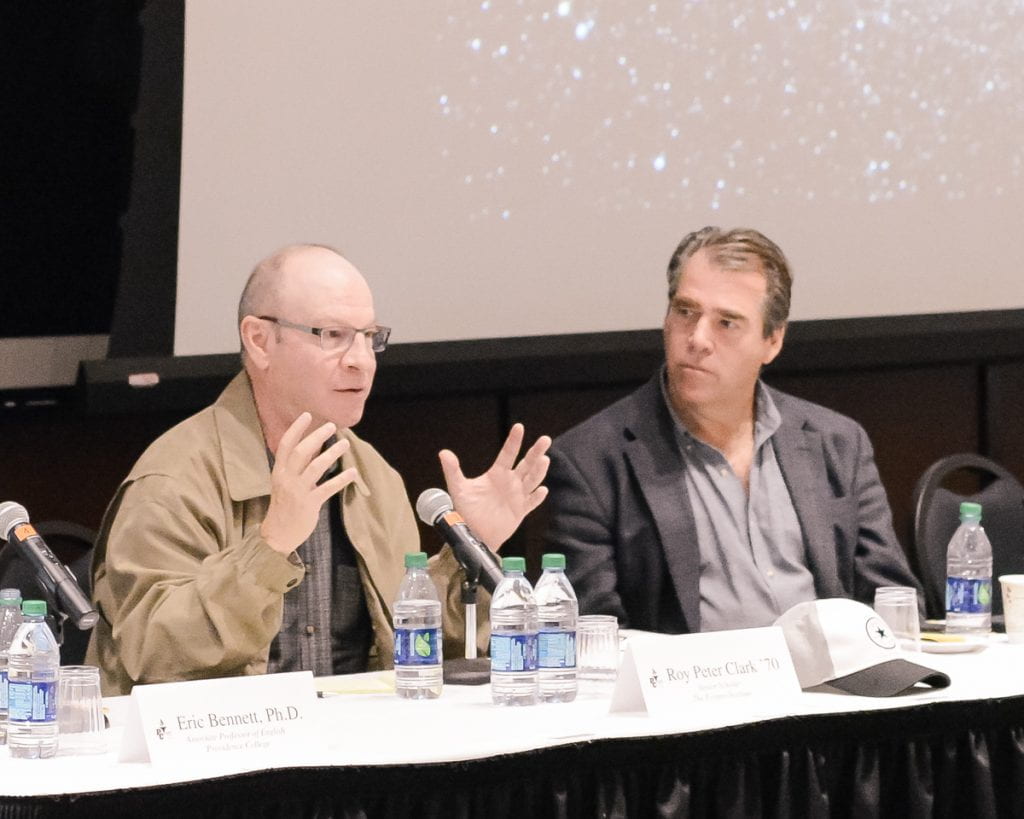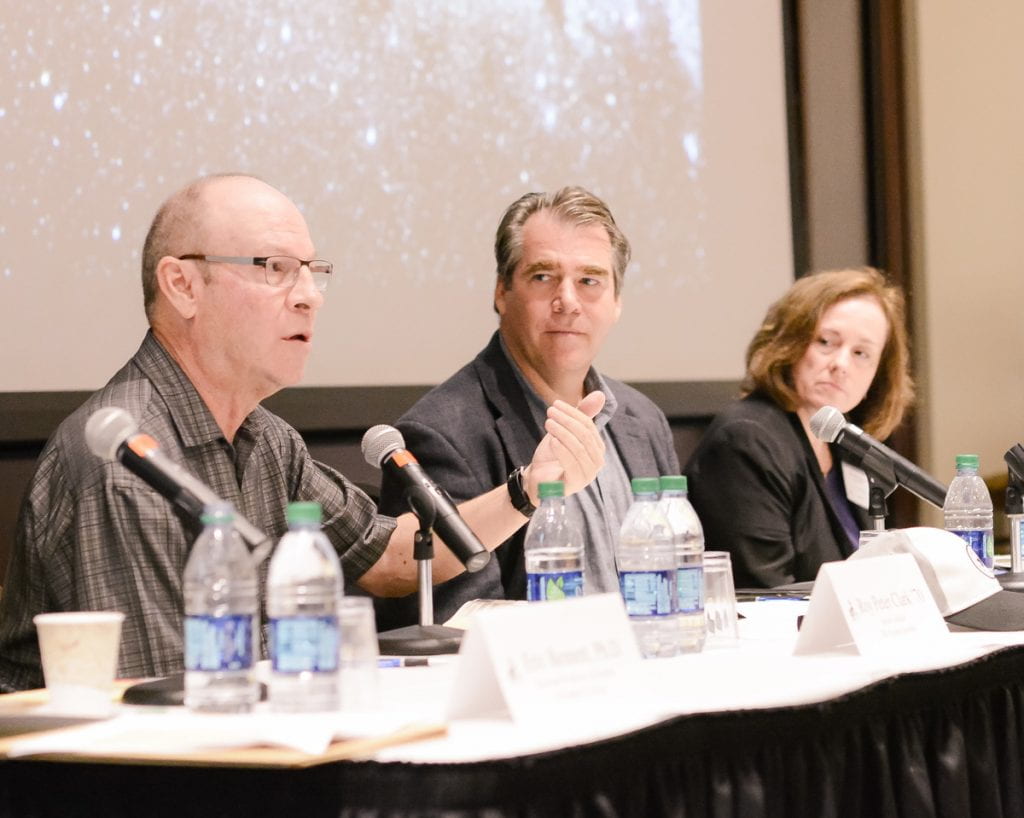August 12, 2021
Why Jesus is my second-favorite writer, and the story we need now more than ever

By Roy Peter Clark ’70, ’17Hon.
I dedicate this essay to the memory of Dr. John F. Hennedy. It was this friend and teacher who first asked me whether I thought Jesus could hit a curve ball if he played for the Red Sox. As a native New Yorker, I suggested that he would more likely have played for the Yankees.
One of the smartest books I have read over the last decade was written by a Biblical scholar at Vanderbilt University. The book is called Short Stories by Jesus: The Enigmatic Parables of a Controversial Rabbi. The author is Amy-Jill Levine, a self-described “Yankee Jewish feminist who teaches in a predominantly Christian divinity school in the buckle of the Bible Belt.”
Few would describe hers as a “writing book,” but it is. It is about the power of storytelling and the amazing influence of a particular storyteller who taught with parables in first century Palestine. Levine coaches us — gently but purposefully — on how to read old work with fresh eyes, free of intolerance. We learn how to read civilization’s most important book — the Bible — like a writer.
With Levine’s help, I am seeing the short stories of Jesus in a new literary way, one that manages to both recover historical context and provide the most contemporary applications.
At a 2016 conference at my alma mater, Providence College, a Roman Catholic school run by the Dominican Order, I made the off-hand remark that “Jesus was my second-favorite writer.” When an uncomfortable laughter made its way across the conference room, I continued this improvisation.
I said that among my favorite writers included George Orwell, Flannery O’Connor, and W.E.B. DuBois. At the top, though it might seem like a cliché, was William Shakespeare. I repeated that Jesus, as a storyteller, was second on my list. I don’t have a transcript, but I said something like this:
“I have been thinking a lot about Jesus lately. In our Catholic tradition, he is true God and true man. His perfection is in God. But his humanity, in all things but sin, is what he has in common with us. When he learned that his cousin died, Jesus wept. The gospels tell me he was very good at some things. He was a devoted son to his mother. He was a brilliant young student of the Jewish law. He was a charismatic speaker and a dynamic leader of his disciples. He was a healer. He was a true friend of the poor, the needy, the downtrodden. We see that on every page.”
But here’s my big question. Aside from his grace and moral goodness, does our faith require us to declare that Jesus was the perfect man? [Noticing curious looks from the audience.] I don’t know. Did he have the perfect singing voice? Was he the most handsome man in Nazareth? Was he the best apprentice carpenter? I’m not sure. If he played power forward for the Providence College basketball team, would he be the best rebounder and scorer? [Laughter.]
Amy-Jill Levine confirms through her rigorous scholarship that Jesus was a great teller of stories. He was Jewish, so he told Jewish stories in a Jewish way. Her analysis includes stories we have come to know as The Prodigal Son, The Pearl of Great Price, The Mustard Seed, The Pharisee and the Tax Collector, the Tenacious Widow, the Lost Sheep, and, the most relevant for our purposes, The Good Samaritan.
In St. Aidan School on Long Island, during “vocations week,” I announced — in first grade — that my calling was not the priesthood but playing centerfield for the New York Yankees. I never became the next Joe DiMaggio or Mickey Mantle. And though I preferred married sex to the priesthood, on occasion I have been asked to step into ministerial roles. I have delivered six eulogies, been the celebrant at three weddings (with a notary nearby), baptized one baby (named Juniper in a neonatal unit), and delivered exactly one sermon at one tent revival meeting for the members of one AME Methodist Church. That sermon was on the Parable of the Good Samaritan. It was inspired by work I was doing on the power of short writing. The ideas in my sermon were informed by Levine’s instructions on how to read what I now believe is Jesus’s best story.
Because of its brevity, only 165 words, I am publishing the parable here. In order to call attention to another powerful book for writers, I am using the King James Version of the Bible, from the Gospel of Luke, 10:25. To understand it, we must remember that it is a story within a story.
Jesus is teaching in the Temple when he is approached by a Lawyer who wants to test Jesus, or perhaps show off his own learning. Everyone is polite, but the dialogue can be seen as a version of Talmudic smack talk. The Lawyer asks what he needs to achieve eternal life. Jesus asks him what he thinks. The Lawyer, quoting Scripture, says that one must love God with the whole fiber of your being, and love your neighbor as yourself. Jesus says, in essence, “cool, go do that.” The lawyer snaps back, “But who is my neighbor?” Now for the good part:
A certain man went down from Jerusalem to Jericho, and fell among thieves, which stripped him of his raiment, and wounded him, and departed, leaving him half dead. And by chance there came down a certain priest that way; and when he saw him, he passed by on the other side. And likewise a Levite, when he was at the place, came and looked on him, and passed by on the other side. But a certain Samaritan, as he journeyed, came where he was; and when he saw him, he had compassion on him, and went to him, and bound up his wounds, pouring in oil and wine, and set him on his own beast, and brought him to an inn, and took care of him. And on the morrow when he departed, he took out two pence, and gave them to the host, and said unto him, Take care of him: and whatsoever thou spendest more, when I come again, I will repay thee. Which now of these three, thinkest thou, was neighbor unto him that fell among the thieves? And he said, He that showed mercy on him. Then said Jesus unto him, Go, and do thou likewise.
Slam dunk. Drop the mike. Stick the landing.
As if receiving critical commentary from heaven, during my only sermon ever, the electric power went out under the revival tent, so I was left at times in the dark without sound. (Very funny, God.)

I cannot testify that these were my exact words, but they carry the gist of my sermon to about fifty of the faithful seated under a revival tent:
Many years ago, when I was in Catholic school, I received some false teaching about the relationship between the Jewish Law and the New Testament. I was told that the old morality was one of revenge: An Eye for an Eye. And that Jesus replaced that law with a new one. Love your neighbor. Be good to those who hurt you. Learn to love your enemy.
This, I learned is just not true. When Jesus questions the Lawyer, he receives back a version of what we now call The Golden Rule. Love your neighbor as yourself. And where did the Lawyer and Jesus get it? They got it from the Torah, the Jewish law, from the book of Leviticus, which instructed the Jews not only to love your neighbor as yourself, but you must also be ready to take the stranger into your midst and treat him like your neighbor. One translation of stranger uses the word “alien.” I can’t help but wonder what Jesus would have thought about our American debate about “illegal aliens” at our Southern border, or about the migrants and refugees trying to escape worn-torn countries across the globe.
Let’s sit back and ask ourselves, why did Jesus tell stories to make his point? Why do we all tell stories? God, with the help of biological evolution, gave us a brain of a certain size. That brain gave us language. And that language gave us the ability to tell stories. Some of those stories are factually true. Others are fiction. We need these stories badly because in real life our experience is too limited for our survival as individuals and as a species.
A story is a form of transportation. It expands our experience. We get to travel all over the world and across time. Jesus invites us to get up from our chairs. He invites us to travel thousands of miles across thousands of years to a narrow, rocky dangerous road that winds from Jerusalem to Jericho.
The great Rev. Dr. Martin Luther King Jr. and his wife Coretta once visited the Holy Land and drove a car down that road, which descended more than a thousand feet. In the days of Jesus this road was known as The Bloody Pass because it was so dangerous, populated by thieves. On the very day before he died, Dr. King spoke with some sympathy of the priest and the Levite who passed by the naked, bloody man in the ditch. Maybe the robbers were still nearby. Maybe the man was faking his injury and was a robber himself.
I know what I would have done if I had passed by that man. I would have stepped to a safe place, pulled out my cell phone, and dialed 911.
What do we know about the man who helped him?
Not much. We don’t know what he looked like or his age or occupation. The first thing we learn is that he was a Samaritan. In that time the Jews and the Samaritans hated each other. The Samaritans were considered half-breeds by the Jews, on the very margins of that society. And that is the point. The Law in Leviticus said you should love your neighbor, and that you should treat the stranger as your neighbor. But Jesus takes it a step further. He is saying to that lawyer, who must concede it: that in your hour of need, it may be the stranger — not the priest or your tribesman — who becomes your neighbor.
This idea is so radical. Think of the Palestinian fighter helping the Israeli soldier. Think back in the day of the Catholic helping the Protestant in Northern Ireland. At a time in America when the Muslim is treated with suspicion as a potential terrorist, think of the Muslim reaching out her hand to help you in your moment of distress.
And what exactly did the Samaritan do to help the wounded man? We know three things that were in his possession — three details of his character. He had with him a beast of burden, probably a donkey, to carry him and his possessions up and down the rocky road. He had wine and oil for his own nourishment. And he had at least two denarii, silver coins, each of which could be pay for a day of labor. (The King James version, notice, translates this into the English “pence.”)

Jesus has only 165 words to deliver his message, so his selection of detail is crucial. The donkey, the wine and oil, the coins – all of these were carried for his own well being. The Samaritan sacrifices all of these for the benefit of the man who becomes his neighbor. He treats the man’s wounds with wine and oil, lifts him onto his animal, and pays for his care at the inn with his two coins. If that were not enough, he tells the innkeeper to care for the man and that the Samaritan would pay more, if necessary, on his return trip.
While I was writing these thoughts into a sermon, my host, the Rev. Kenny Irby, reminded me that there is a Gospel of Mercy and a Gospel of Justice. The parable of the Good Samaritan may be the ultimate gospel of mercy. The first question the Levite might have asked when he saw the injured man was, “If I stop to help this man, what will happen to me?” Dr. King writes: But then the Good Samaritan came by, and he reversed the question: “If I do not stop to help this man, what will happen to him?”
What about the Gospel of Justice? asks Dr. King. How many dying men do we have to rescue before we do something about the ditch? How do we straighten the road so it is safer for all to travel? How do we shine a light upon the darkness?
Jesus embraces the Jewish law to which he adhered and enriched it with story. How will we get to heaven? We must love the Lord with our hearts and souls. We must love the neighbor as ourselves. But who is my neighbor? It may be someone just like you. Or it may be someone very different. Embrace that difference. Embrace the stranger.
Roy Peter Clark ’70, ’17Hon. is the retired senior scholar at The Poynter Institute, a journalism school in St. Petersburg, Fla., and has written or edited 18 books, including Writing Tools: Fifty Essential Strategies for Every Writer. He graduated as his class salutatorian, earned a Ph.D. in English from Stony Brook University in 1974, and presented the Commencement address for the Class of 2017.





